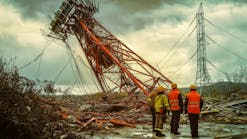Soluna Secures Land to Co-Locate AI and Bitcoin Mining Center with Renewable Wind Power
Renewable-powered data center developer Soluna Holdings says it has secured the Texas land needed to both build its newest facility and support 187 MW of wind energy to power artificial intelligence and Bitcoin mining operations.
The company will co-locate its Project Rosa near a wind farm development in Texas. Albany, New York-based Soluna secured 60 acres for its planned AI and Bitcoin mining center to be powered by the adjacent renewable energy.
“Securing these land agreements is a critical achievement for Soluna,” said John Belizaire, CEO of Soluna, in a statement. “Project Rosa not only enhances our operational capacity but also reinforces our commitment to delivering sustainable, cutting-edge solutions in high performance computing.”
Soluna has several green data center projects under way. The company’s 166-MW Project Kati recently exited the planning phase with the grid system operator Electric Reliability Council of Texas (ERCOT). The ERCOT milestone announced in February shows it advancing the past the interconnection queue and allowing Project Kati to move toward construction.
“This milestone brings another project closer to shovel readiness helping to realize our vision of expanding renewable computing infrastructure for the world’s most innovative computing applications,” CEO Belizaire said of the Project Kati deal.
Project Rosa is named after Rosalind Franklin, a chemist whose work was central to understanding the molecular structures of DNA, RNA, and viruses. In August, Soluna broke ground on its flagship Project Dorothy II also in Texas and named to honor Dorothy Vaughan, an African American mathematician and “human computer” who worked for the National Advisory Committee for Aeronautics and NASA in 1939.
The rise of AI computing needs and energy demand is pushing for a scaling up of new power generation resources, including gas-fired plants, next-gen nuclear and co-located renewable projects such as these reported by Soluna Holdings. Data centers and Bitcoin mining are two of the most energy-intensive sectors in the digital age.
Texas will the Lone Star home to Microgrid Conference 2025
Happening April 15-17 at the Sheraton Dallas: Early Bird Registration






